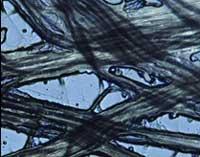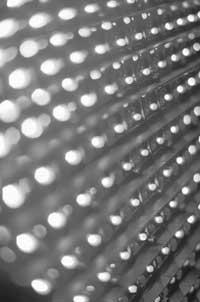Plastic self-repair
2001/02/16 Galarraga Aiestaran, Ana - Elhuyar Zientzia
Things made from hard plastics we use every day crack over time, which is known as plastic fatigue. Now, as it has just been published in the journal Nature, at the University of Illinois they have invented a new type of plastic that solves these cracks naturally.

Polymer matrices contain glass, carbon and other components within their structure. Due to vibrations, tensions and weight, small cracks appear that rise until the material becomes useless.
To solve this problem, capsules of a hair thickness have been interspersed in the polymer matrix. When the fracture expands it breaks the capsules and they release a liquid glue that contains them. When the catalyst in the matrix and liquid molecule come into contact, the liquid glue is polymerized. As a result, a wide network is created linking the two cracked sides.
In order for the result to be satisfactory, the capsules must have an exact hardness. If they are much stronger than the matrix around them, the small cracks will be diverted when they reach the capsule. On the contrary, if they are too soft, it will facilitate cracks. In addition, the liquid must be stable during the stay inside the capsule and fluid during the breakage of the capsule. In addition, contact with the catalyst should polymerize easily.
The research showed that the cracked material was formed two days later and contained 75% of the original resistance. Despite the previous tests for obtaining this type of material, it is the first time that such satisfactory and useful results are obtained.
One of the biggest drawbacks to the diffusion of this material is its price. However, it can be very interesting in cases such as prosthetics, artificial organs, satellites or large bridges.

Gai honi buruzko eduki gehiago
Elhuyarrek garatutako teknologia




